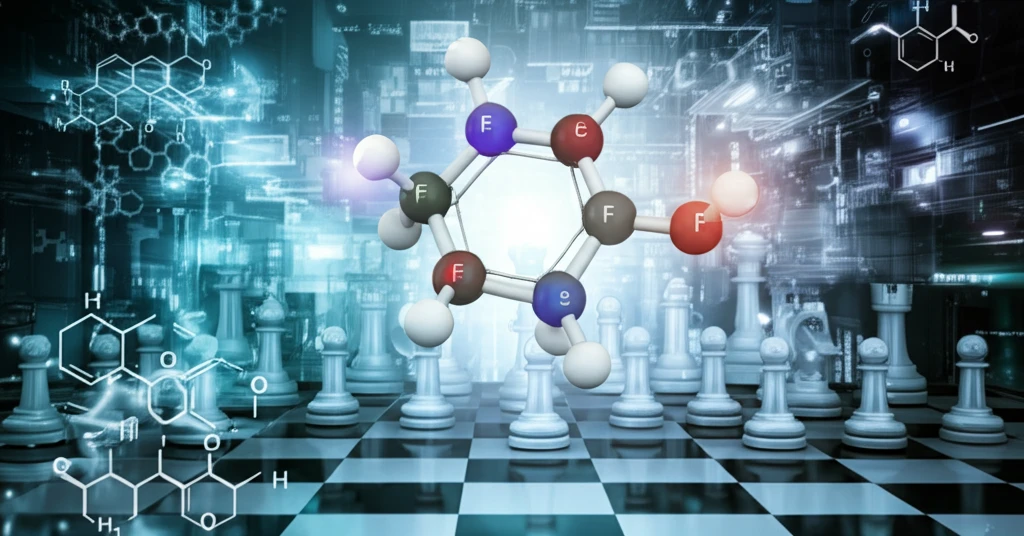
Unlocking Molecular Secrets: How a 'Reactivity Switch' Could Revolutionize Drug Design
"Chemists discover a groundbreaking method for fluorinating alkenes, opening doors to new pharmaceuticals and advanced materials"
In the ever-evolving world of chemistry, the ability to manipulate molecules with precision is paramount. One particularly sought-after skill is fluorination—the incorporation of fluorine atoms into organic molecules. Fluorine can dramatically alter a molecule's properties, making it more stable, more reactive, or more easily absorbed by the body. This is why fluorinated compounds are common in pharmaceuticals, agrochemicals, and advanced materials.
Recently, a team of chemists at Johns Hopkins University has unveiled a new method for fluorinating alkenes (molecules containing carbon-carbon double bonds). This method, published in the Journal of Organic Chemistry, offers a unique 'reactivity switch,' allowing chemists to control where the fluorine atom ends up on the molecule. This level of control could be a game-changer in the synthesis of complex molecules, particularly in drug discovery.
The traditional methods often yield a mix of products, making it difficult to isolate the desired compound. The new method detailed in this article uses Selectfluor, a commercially available fluorinating reagent, in combination with light and a sensitizer to achieve high selectivity and control over the fluorination process. This approach not only simplifies the synthesis but also opens up new possibilities for creating novel fluorinated molecules.
The Power of Fluorination: Why It Matters?

Fluorine is a unique element. It's the most electronegative element, meaning it strongly attracts electrons. When a fluorine atom is attached to a carbon atom in an organic molecule, it creates a strong dipole, altering the molecule's shape and reactivity. This seemingly small change can have a profound impact on the molecule's behavior.
- Improved Metabolic Stability: Fluorine can block metabolic enzymes from attacking a drug molecule, extending its lifespan in the body.
- Enhanced Bioavailability: Fluorine can improve a drug's ability to cross cell membranes, making it more easily absorbed and distributed.
- Modified Acidity and Basicity: Fluorine can subtly tweak a molecule's acidity or basicity, affecting its interactions with biological targets.
- Unique Binding Interactions: The size and electronic properties of fluorine can create novel binding interactions with proteins and other biomolecules.
The Future of Fluorination: A New Era of Molecular Design?
The Johns Hopkins team’s discovery has the potential to transform how chemists approach fluorination. By understanding and harnessing the 'reactivity switch' phenomenon, researchers can design new synthetic strategies for creating complex fluorinated molecules with unprecedented precision. This could accelerate the discovery of new drugs, materials, and other valuable compounds, opening up exciting new possibilities for scientific innovation.
